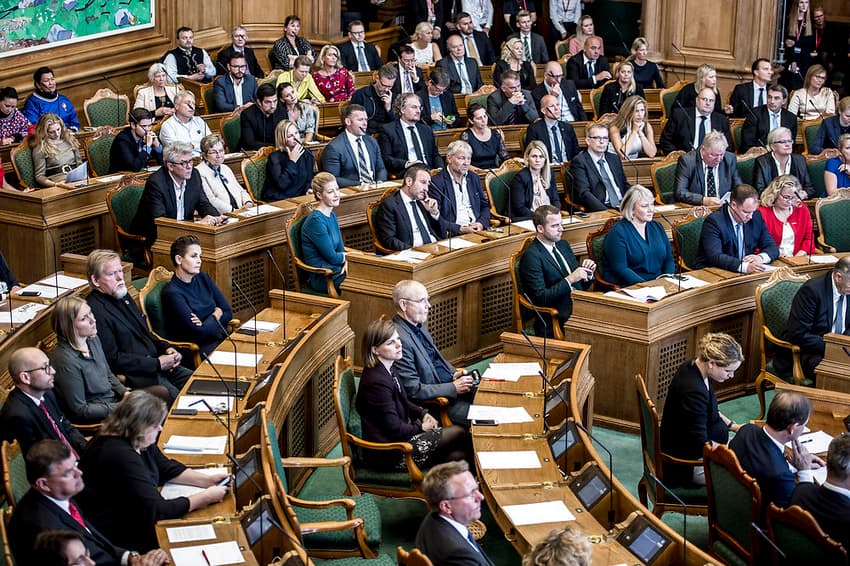Petition for Danish circumcision ban loses political support

The wording of a petition for a minimum age on circumcision has resulted in a loss of support from politicians.
The petition to ban circumcision of children, forwarded by lobby group Intact Denmark, in June reached the 50,000 signatures required in order to force parliament to take up the issue.
While many politicians previously supported the implementation of an age limit for circumcision, they are now withdrawing their support. This is due to key elements of the proposal, newspaper Kristeligt Dagblad writes.
Intact Denmark is a lobby group which aims to “stop genital mutilation of all children worldwide regardless of cultural affiliation or religion of their parents,” according to the organisation’s website.
Intact claims that Denmark has neglected to comply with international regulations by allowing male circumcision. The petition states, among other things, that a “gender-neutral age of 18 years for circumcision” will ensure “implementation” of the European Council’s biological ethics conventions.
By supporting the proposal, politicians can also ensure that Denmark lives up to the UN Convention on the Rights of the Child, they say.
However, the argument that Denmark is not in compliance with the convention is inaccurate, according to a number of prior written evaluations by the Ministry of Health. Denmark is already complying with the convention as detailed by the UN, the ministry found.
“It is simply not correct that we do not live up to this convention already,” MP Liselott Blixt, chair of the parliamentary Health Committee, said to Kristeligt Dagblad.
Blixt has, however, advocated an age limit on circumcision for a number of years, the newspaper writes.
The Danish People's Party MP also criticized the proposal as it is currently worded, arguing that it would legalize female circumcision.
Jane Heitman, health spokesperson with the governing Liberal (Venstre) party, has also confirmed she will not vote for the proposal.
“I stand by the answer given by the ministry, which emphasizes that current practices do not pose any threats in relation to the UN Convention on Children’s rights,” Heitman told Kristeligt Dagblad.
“In addition, I think it is completely unacceptable and irresponsible to allow circumcision of women," she added.
READ ALSO:
Comments
See Also
The petition to ban circumcision of children, forwarded by lobby group Intact Denmark, in June reached the 50,000 signatures required in order to force parliament to take up the issue.
While many politicians previously supported the implementation of an age limit for circumcision, they are now withdrawing their support. This is due to key elements of the proposal, newspaper Kristeligt Dagblad writes.
Intact Denmark is a lobby group which aims to “stop genital mutilation of all children worldwide regardless of cultural affiliation or religion of their parents,” according to the organisation’s website.
Intact claims that Denmark has neglected to comply with international regulations by allowing male circumcision. The petition states, among other things, that a “gender-neutral age of 18 years for circumcision” will ensure “implementation” of the European Council’s biological ethics conventions.
By supporting the proposal, politicians can also ensure that Denmark lives up to the UN Convention on the Rights of the Child, they say.
However, the argument that Denmark is not in compliance with the convention is inaccurate, according to a number of prior written evaluations by the Ministry of Health. Denmark is already complying with the convention as detailed by the UN, the ministry found.
“It is simply not correct that we do not live up to this convention already,” MP Liselott Blixt, chair of the parliamentary Health Committee, said to Kristeligt Dagblad.
Blixt has, however, advocated an age limit on circumcision for a number of years, the newspaper writes.
The Danish People's Party MP also criticized the proposal as it is currently worded, arguing that it would legalize female circumcision.
Jane Heitman, health spokesperson with the governing Liberal (Venstre) party, has also confirmed she will not vote for the proposal.
“I stand by the answer given by the ministry, which emphasizes that current practices do not pose any threats in relation to the UN Convention on Children’s rights,” Heitman told Kristeligt Dagblad.
“In addition, I think it is completely unacceptable and irresponsible to allow circumcision of women," she added.
READ ALSO:
Join the conversation in our comments section below. Share your own views and experience and if you have a question or suggestion for our journalists then email us at [email protected].
Please keep comments civil, constructive and on topic – and make sure to read our terms of use before getting involved.
Please log in here to leave a comment.